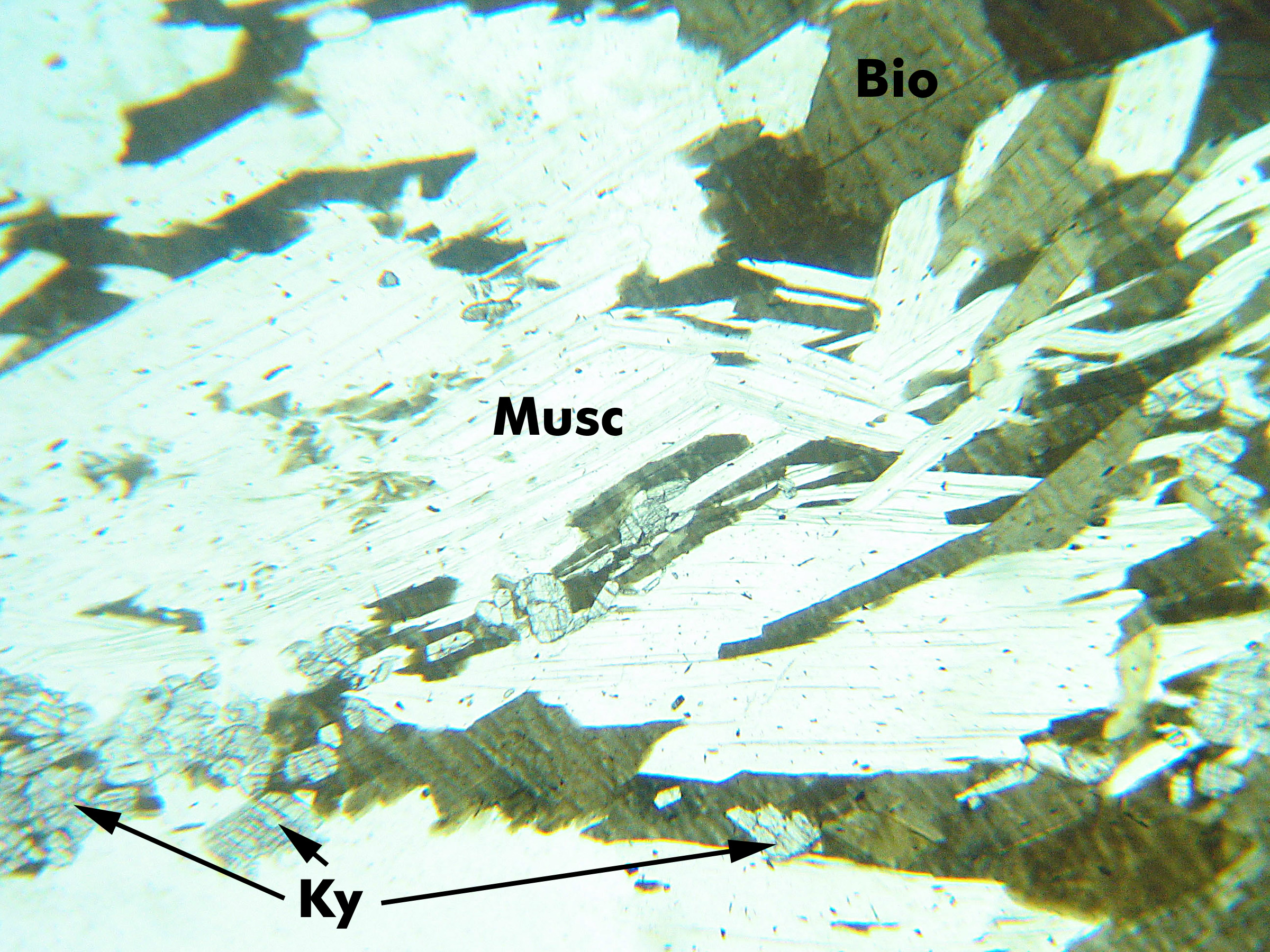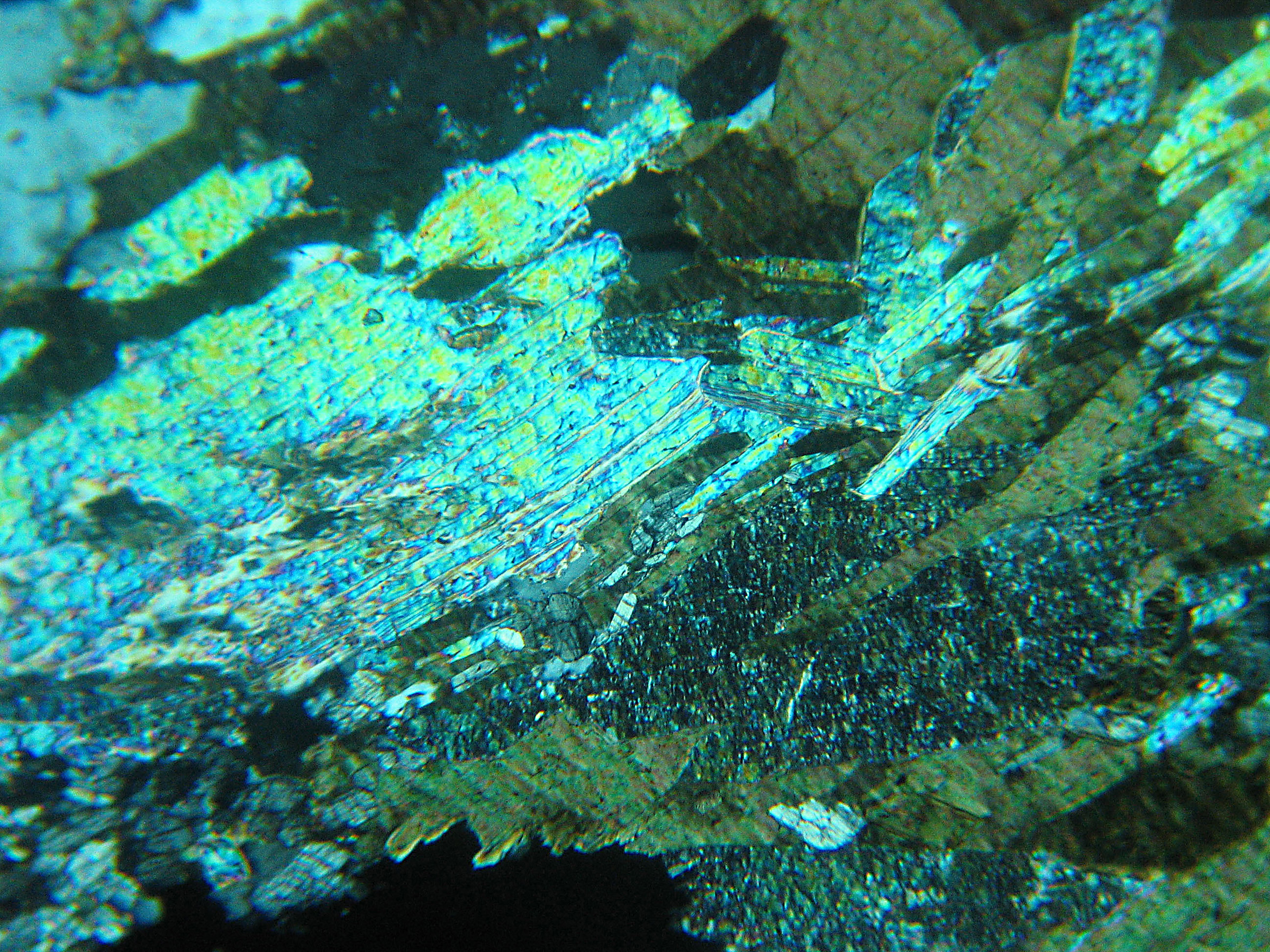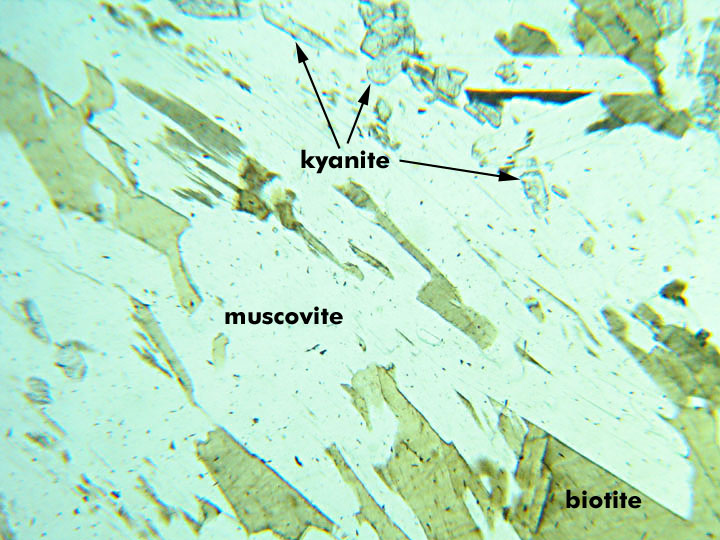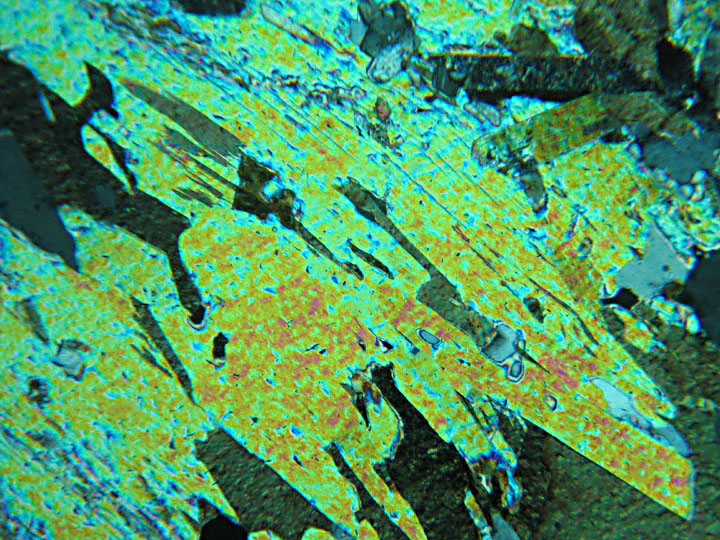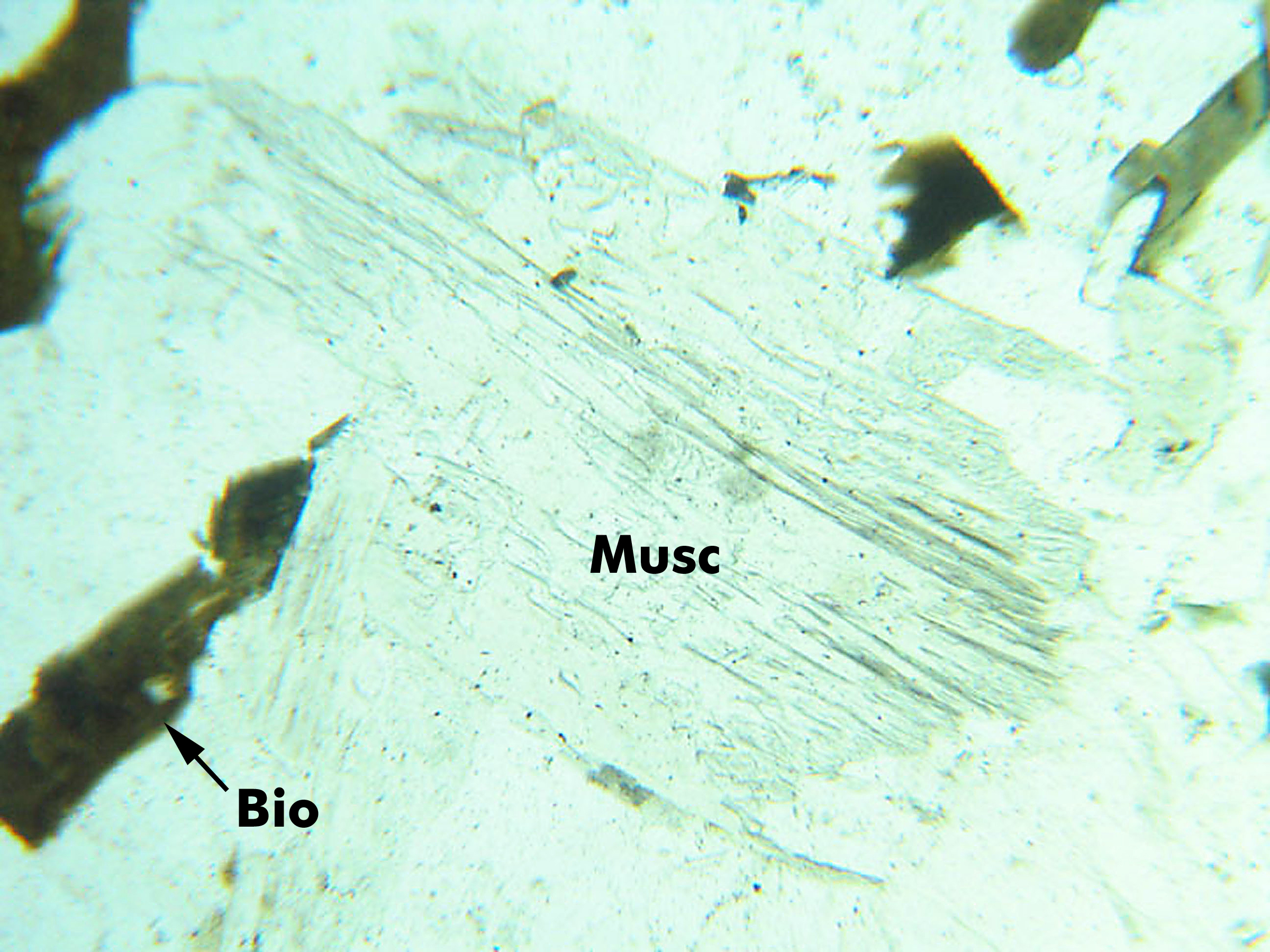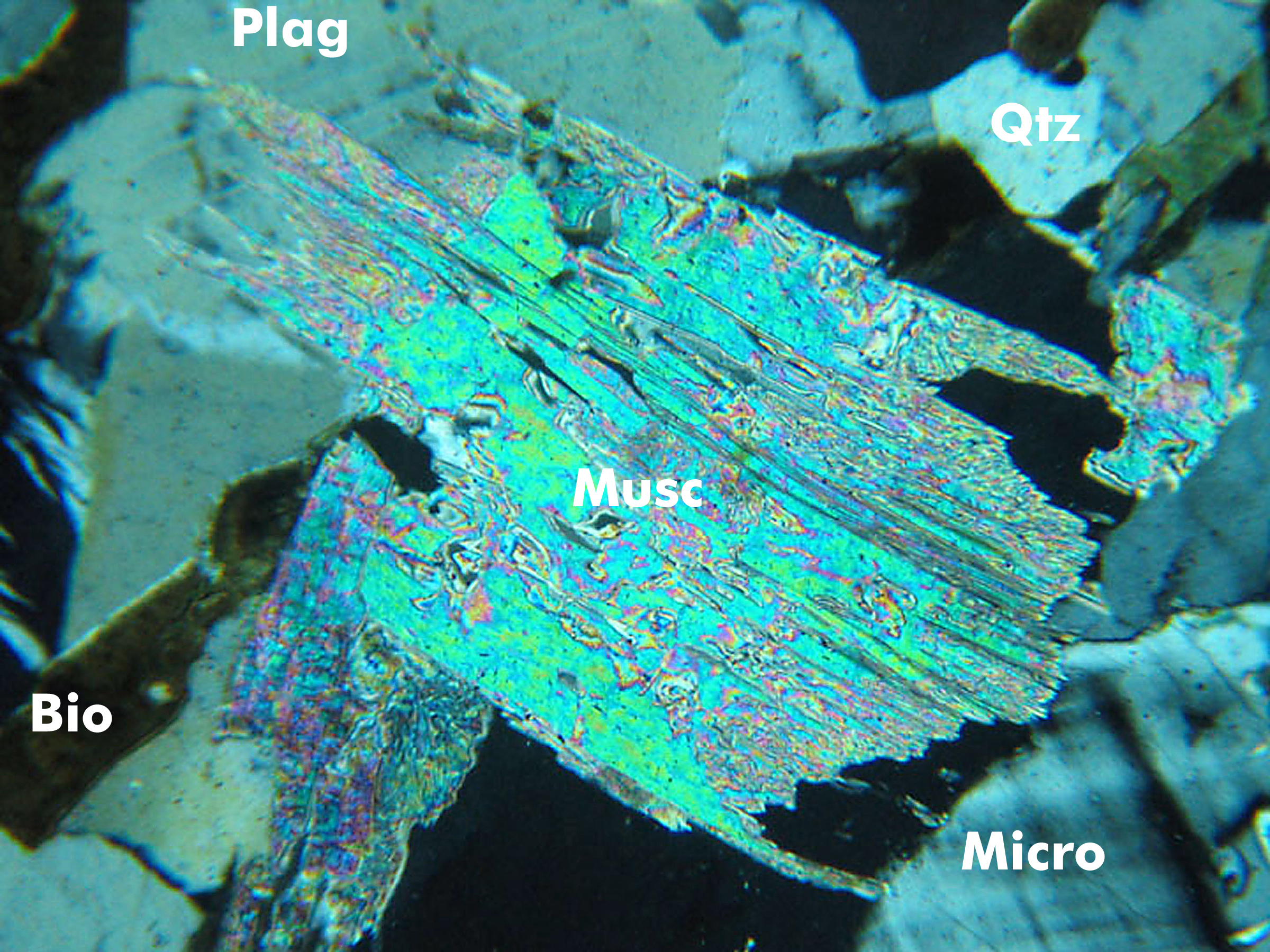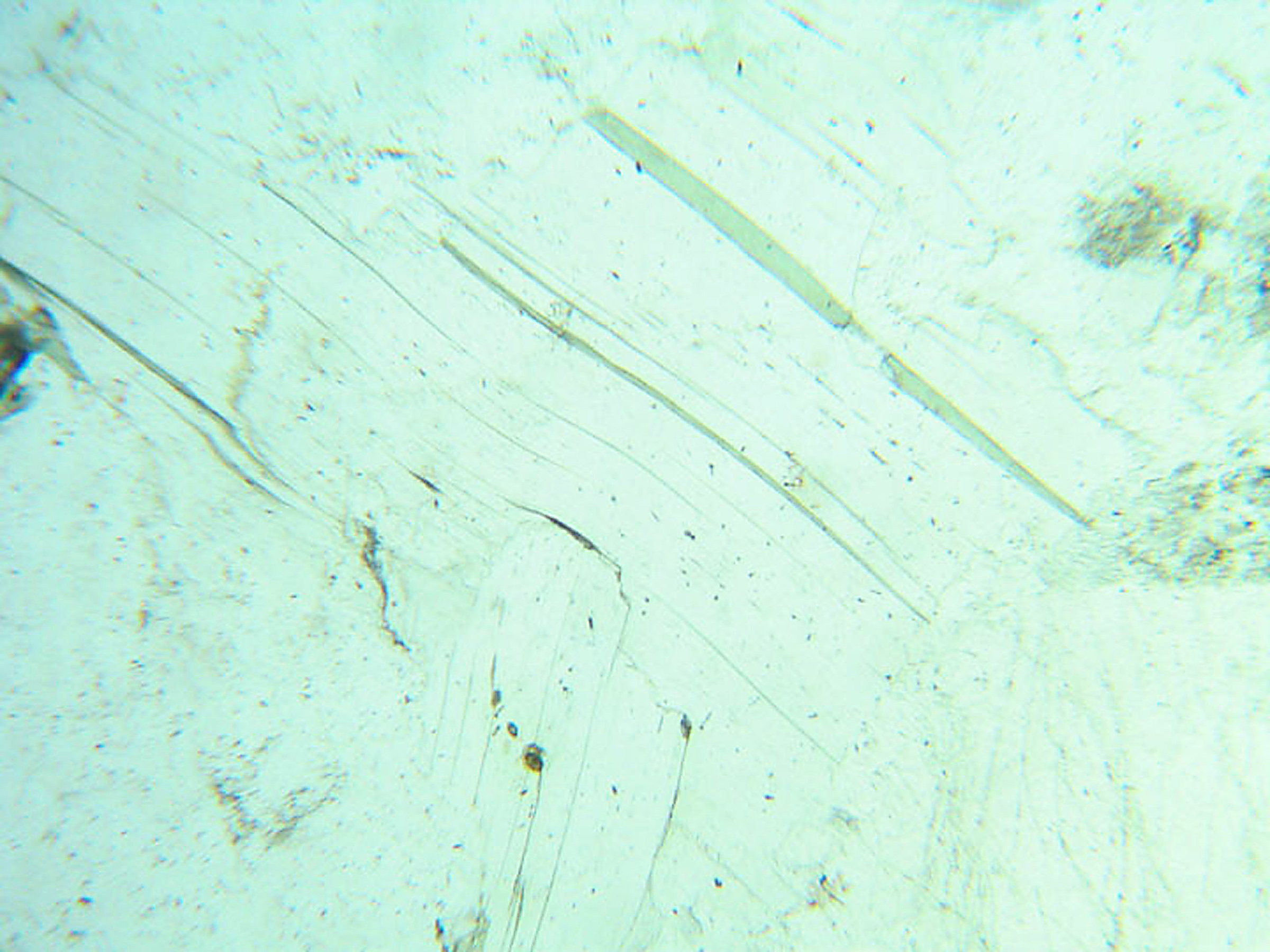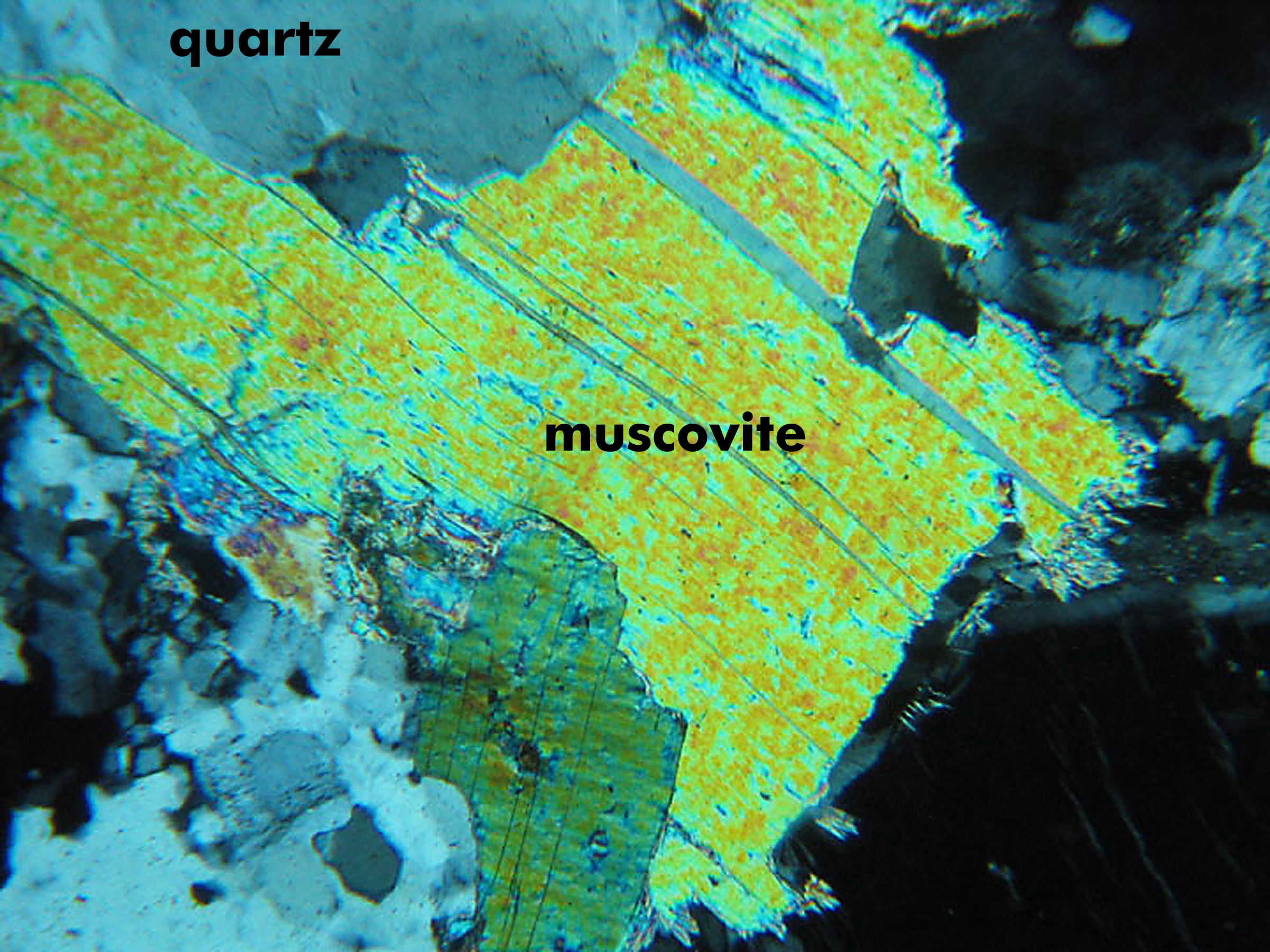|
Muscovite (white mica)
Occurrence
|
Muscovite is widespread and common in a wide
variety of igneous and metamorphic rocks and, to a much lesser
extent, in some immature sedimentary rocks. Muscovite is the
commonest white mica. Distinguishing it from other white micas
and britle micas in thin section can be difficult or impossible.
So, many petrologists use the generic phrase "white mica"
when describing what they see in thin section, rather than trying
to get more specific. A fine grained variety of muscovite, often
occurring as an alteration product, is termed sericite. |
Composition
|
Muscovite's chemistry is somewhat variable
but generally close to KAl2AlSi3O10(OH)2. |
Identification
Important properties
|
·Color
- usually colorless, less commonly pale green and slightly pleochroic. |
|
·Habit
and cleavage - often appears
as tabs or long skinngy flakes which may be bent. It may show
one excellent cleavage, depending
on grain orientation. Hexagonal tabular crystals are rare. |
|
·Relief
is low to moderate; often appears as a white transparent mineral
with few features (PP). |
|
·Second-order interference
colors (up to second order red), often with birds-eye
or pebbly extinction or wavey pattern of interference
colors, especially when looking down on flat side of flakes. |
|
·Extinction angle is 0
to a few degrees from cleavage. |
|
·Biaxial (-), 2V= 35-50o
. |
Similar minerals
|
·Biotite,
except for the most Mg-rich phlogopite is much more strongly
colored. Phlogopite has a smaller 2V than muscovite. |
|
·Talc
is is very similar but has a smaller 2V. |
|
·Very pale chlorite
is similar but has lower birefringence
and often anomalous interference
colors. |
|
·Paragonite and margarite often
cannot be distinguished from muscovite in thin section. Both,
however, are much rarer than muscovite. |
|
·Pyrophyllite is very similar
but has a higher 2V. |
|
